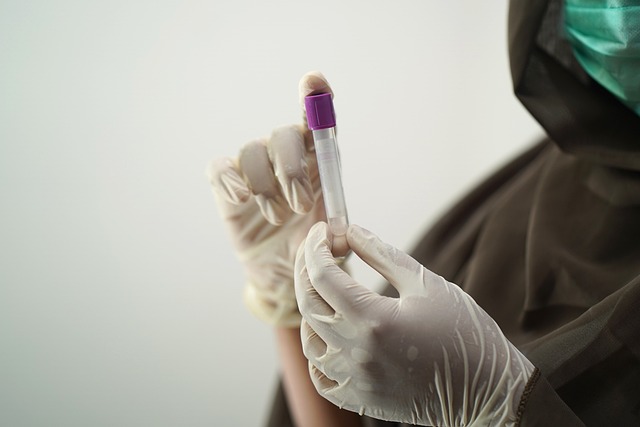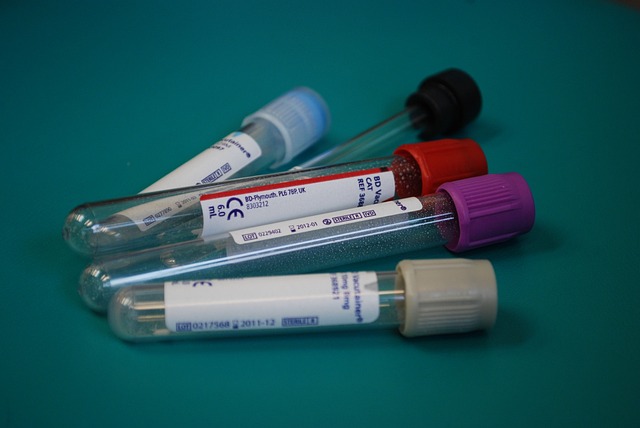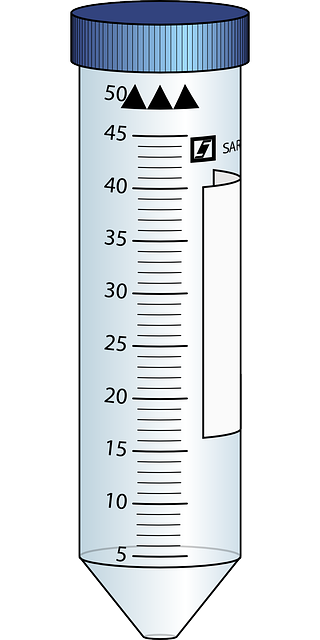The UK General Health Blood Test is an essential diagnostic tool for detecting iron deficiency anemia, a common health issue. This test includes measurements of hemoglobin, white blood cells, platelet count, mean corpuscular volume (MCV), iron levels, ferritin levels, and transferrin saturation to assess overall health and identify iron deficiencies. Early detection through this comprehensive screening is crucial for effective management and improved health outcomes, as it allows for timely and personalized treatment plans, which may involve dietary changes or iron supplements. The UK's National Health Service (NHS) offers these tests, employing standardized blood collection methods followed by analysis in accredited laboratories equipped with advanced technology to ensure accurate results. Understanding the nuances of these blood test results is vital for individuals exhibiting symptoms like fatigue or pallor, as it enables prompt consultation with healthcare professionals to interpret the data and receive appropriate care for iron deficiency anemia. Regular health screenings facilitated by the UK General Health Blood Test are key in early detection and effective treatment of this condition.
Iron deficiency anemia is a prevalent health concern, with early detection being key to effective management. In the UK, general health blood tests serve as a primary diagnostic tool for identifying this condition. This article delves into the nuances of these tests, guiding readers through understanding their significance, the types available within the UK’s healthcare system, and interpreting the results. By illuminating the aspects of iron deficiency anemia detection via blood tests, individuals can better navigate their health journey.
- Decoding Iron Deficiency Anemia: The Role of UK General Health Blood Tests
- Understanding the Different Types of Blood Tests for Iron Deficiency Anemia in the UK
- Interpreting Your Results: What Your Iron Deficiency Anemia Blood Test Says About Your Health
Decoding Iron Deficiency Anemia: The Role of UK General Health Blood Tests

Iron deficiency anemia is a common health condition characterized by inadequate iron levels, leading to a reduction in hemoglobin and an increased risk of fatigue and other complications. In the UK, general health blood tests are pivotal in detecting this condition early. These tests measure serum ferritin, which indicates iron stores within the body, and transferrin saturation, which assesses how well iron is being absorbed. The UK National Health Service (NHS) employs these tests to evaluate individuals who exhibit symptoms suggestive of anemia or those at higher risk due to dietary habits, frequent blood donation, or certain medical conditions. Upon identification of iron deficiency anemia, healthcare providers can tailor treatment plans accordingly, which may include dietary modifications or iron supplements to restore iron levels and improve overall health outcomes.
The process for obtaining results from a UK General Health Blood Test is standardized and reliable. It involves drawing blood from a vein in the arm or a finger prick for capillary blood, depending on the patient’s condition and the preference of the healthcare provider. The sample is then sent to an accredited laboratory where it undergoes various analyses, including those for iron-related markers. The laboratories in the UK are equipped with state-of-the-art technology and adhere to strict quality control measures to ensure accurate and precise results. This ensures that individuals receive a correct diagnosis, leading to effective treatment and management of iron deficiency anemia, thereby improving their quality of life and preventing potential complications associated with this condition.
Understanding the Different Types of Blood Tests for Iron Deficiency Anemia in the UK

In the UK, iron deficiency anemia is a common health concern that can be effectively diagnosed through various blood tests. These tests measure different components of your blood to assess whether you have iron deficiency anemia or not. The UK General Health Blood Test is a comprehensive analysis that includes measurements of hemoglobin, white blood cells, platelet count, mean corpuscular volume (MCV), and iron levels among other parameters. This test serves as the first step in evaluating your overall health and potential iron deficiency, providing a clear picture of your body’s iron stores. Additionally, ferritin levels are often assessed to determine the body’s iron reserves; this protein is an indicator of iron concentration within the body, and its measurement can be crucial in diagnosing iron deficiency anemia. Another test, serum iron, measures the amount of iron not bound to proteins in your blood. Taken together with transferrin saturation—which reflects the proportion of transferrin, a protein that carries iron in the blood, that is saturated with iron—these tests can help healthcare providers pinpoint iron deficiency anemia and determine appropriate treatment options. It’s important for individuals experiencing symptoms such as fatigue, weakness, or pale skin to consult their GP for a UK General Health Blood Test, ensuring timely diagnosis and management of this common health issue. Understanding the different types of blood tests available is key to effectively identifying iron deficiency anemia in its early stages, allowing for prompt intervention and improved health outcomes.
Interpreting Your Results: What Your Iron Deficiency Anemia Blood Test Says About Your Health

Identifying iron deficiency anemia is a critical aspect of maintaining general health and well-being. In the UK, the NHS offers a comprehensive General Health Blood Test that includes measurements for iron levels among other key health indicators. When interpreting your results from this test, it’s crucial to understand what they mean for your health. If your serum ferritin level is low, it may indicate an iron deficiency. This can be a result of blood loss, often seen in women with heavy menstrual periods or those who have undergone surgery. Alternatively, it could suggest that your body isn’t absorbing iron properly, which might be a concern for individuals with certain digestive conditions like Crohn’s disease or celiac disease. The transferrin saturation and mean corpuscular volume (MCV) can also provide valuable insights; abnormally low transferrin saturation suggests that the body is not effectively using the iron it has, while an elevated MCV typically points to a microcytic anemia, which is often associated with iron deficiency. It’s important to discuss these findings with a healthcare provider who can provide personalized advice and treatment options based on your overall health status as indicated by your UK General Health Blood Test results. Understanding the significance of these values empowers you to take proactive steps towards improving your iron levels and addressing any underlying health issues.
In conclusion, iron deficiency anemia is a prevalent condition that can be accurately diagnosed through various blood tests within the UK’s General Health Blood Test framework. Understanding the nuances between these tests, including their specific functions and interpretations of results, empowers individuals to manage their health proactively. Regular screening through such tests is pivotal for early detection and treatment, which can significantly improve quality of life. For those concerned about iron deficiency anemia, consulting healthcare professionals who oversee the UK General Health Blood Test process is advisable for personalized care and tailored advice based on individual health needs.
